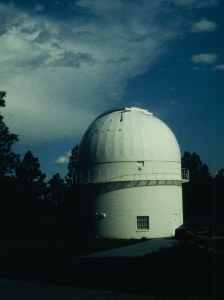 |
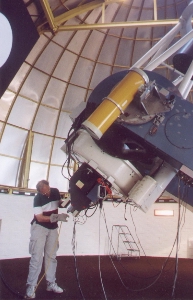 |
 |
 |
Lowell maintains a modest visiting-observer program, through whose good graces I've gotten a large collection of galaxy images (especially of interacting systems) through the 1.1-meter Hall telescope. This instrument is at the observatory's Anderson Mesa dark-sky site south of Flagstaff, also home of the 1.8m Perkins telescope, the National Undergraduate Research Observatory, and the Naval Observatory's Prototype Optical Interferometer. Many of these images were used in conjunction with Kitt Peak long-slit spectra to connect the morphological distortions to kinematic and star-forming features produced during interactions. Here are some sample galaxy pairs from the 42-inch (which has also been a major contributor to my Messier gallery). Further samples of Seyfert galaxy images from the 1.1m may be seen here.
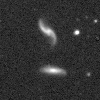 |
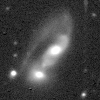 |
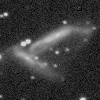 |
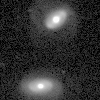 |
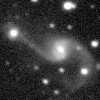 |
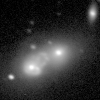 |
| K293 (R) | K534 (R) | K566 (R) | Mkn 612 (V) | Mkn 897 (V) | NGC 1143/4 (V) |
Lowell Observatory has strong historical associations. You can visit Percival Lowell's 24-inch refractor in its wedding-cake dome, once floated on salt water and turned by pulling on ropes for a distinctly nautical feel. Even his tomb evokes the sky and the observatory. Not only the telescope, but the photographic plates, used to discover Pluto, are on display. And reaching for more light, the Perkins Observatory 1.8-m reflector (shared currently with Ohio Wesleyan University) has been relocated from Ohio to Anderson Mesa, just south of Flagstaff. Anderson Mesa also hosts the Naval Prototype Optical Interferometer (NPOI) and the National Undergraduate Research Observatory (NURO). The Lowell headquarters in Flagstaff is well worth a visit, especially with the new visitor center. The dome of the old library (sadly, I'm not sure it's still open to visitors) is a work of art, with the large painting of Lowell and the history of Mars exploration and a huge stained-glass Saturn lamp overhead. One can see one of the original discovery plates of Pluto, and on public nights look through the classic refractor (I couldn't find any canals painted into the eyepiece). And if you've gotten this far, you can't pass up visits to Meteor Crater, Sunset Crater, and the Wupatki ruins.
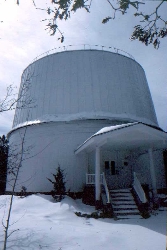 |
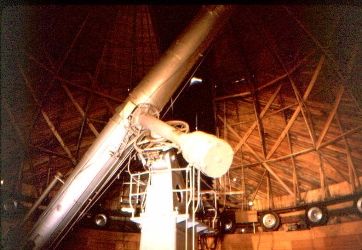 |
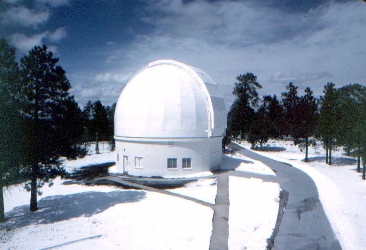 |
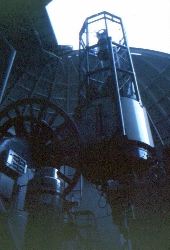 |
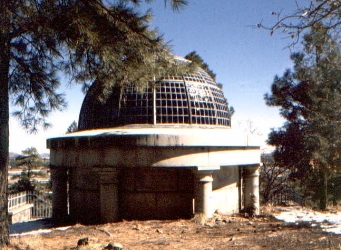 One
of the more unusual sights on Mars Hill is Percival Lowell's
tomb, remniscent of both the dome of an observatory and the
night sky, overlooking Flagstaff. It is inscribed with some of his quotations
about the vicissitudes of an astronomer's life, such as the need to separate
oneself from the mass of humanity in mountaintop contemplation of
cosmic mysteries:
One
of the more unusual sights on Mars Hill is Percival Lowell's
tomb, remniscent of both the dome of an observatory and the
night sky, overlooking Flagstaff. It is inscribed with some of his quotations
about the vicissitudes of an astronomer's life, such as the need to separate
oneself from the mass of humanity in mountaintop contemplation of
cosmic mysteries:
Astronomy now demands bodily abstraction of its devotee... To see into the beyond requires purity... and the securing it makes him perforce a hermit from his kind... He must abandon cities and forego plains... Only in places above and aloof from men can he profitably pursue his search. He must learn to wait upon his opportunities and no less to wait for mankind's acceptance of his results... for in common with most explorers he will encounter on his return that final penalty of penetration - the certainty at first of being disbelieved. (from Mars and its Canals).
Both Lowell sites may be seen in these USGS images from the Terraserver site. (Go straight to the Google Maps satellite views for the Flagstaff or Anderson Mesa locations). The Anderson Mesa picture is dominated by the NPOI interferometer arms.
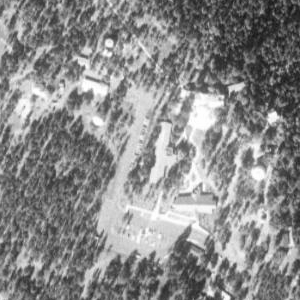 |
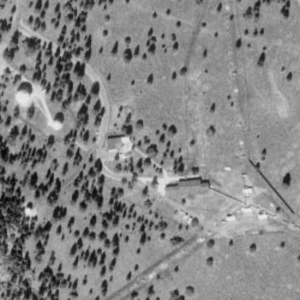 |
Last changes: 04/2007 © 1999-2007